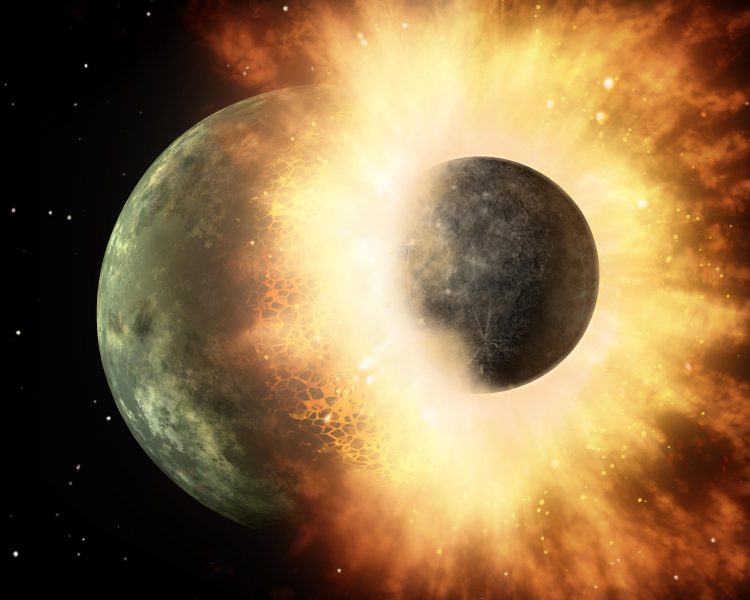Finding the Origin of Earth’s Iron
November 20, 2017

The iron at our planet’s core is unique among known worlds, having a higher level of heavy iron isotopes than anywhere else in the known solar system. The reason why our planet ended up with the heavy stuff has long thought to be linked to the formation of the Earth’s core. But new research led by the Jackson School of Geosciences is calling into question the prevailing theory on the events that shaped our planet during its earliest years.
The research, published in Nature Communications in February 2017, opens the door for other competing theories about why the Earth, relative to other planets, has higher levels of heavy iron isotopes.
“The Earth’s core formation was probably the biggest event affecting
Earth’s history. Materials that make up the whole Earth were melted and differentiated,” said Jung-Fu Lin, an associate professor in the Department of Geological Sciences and one of the study’s authors. “But in this study, we say that there must be other origins for Earth’s iron isotope anomaly.”
Lin said that one of the most popular theories to explain the Earth’s iron signature is that the relatively large size of the planet (compared with otherrocky bodies in the solar system) created high pressure and high temperature conditions during core formation that made different proportions of heavy and light iron isotopes accumulate in the core and mantle.
This resulted in a larger share of heavy iron isotopes bonding
with elements that make up the rocky mantle, while lighter iron isotopes bonded together with other trace metals
to form the Earth’s core.
But when the research team used a diamond anvil to subject small samples of metal alloys and silicate rocks to core formation pressures, they not only found that both types of iron isotopes
stayed put, but that the bonds got stronger. Instead of rebonding with common mantle or core elements, the bonds the heavy and light isotopes were already in got sturdier.
Jin Liu, now a postdoctoral researcher at Stanford University, led the research while earning his Ph.D. at the Jackson School. Collaborators include scientists from the University of Chicago, Sorbonne Universities in France, Argonne National Laboratory, the Center for High Pressure Science and Advanced Technology Research in China, and the University of Illinois at Urbana–Champaign.
Back to the Newsletter